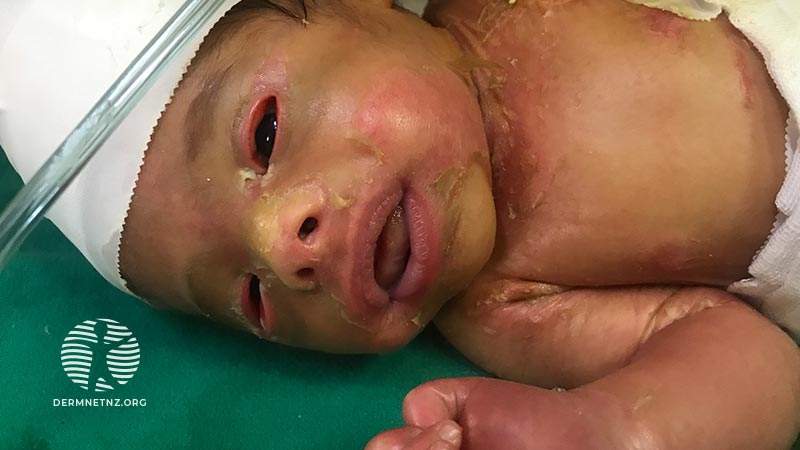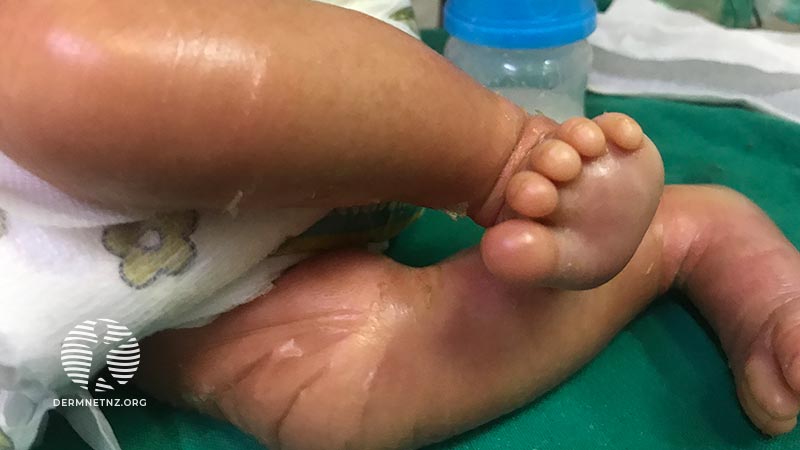Main menu
Common skin conditions

NEWS
Join DermNet PRO
Read more
Quick links
Newborn encased in a shiny membrane
Last reviewed: August 2023
Author: Dr Shadi Habib, Dermatologist, Ibn al-Walid Hospital, Homs, Syria (2023)Reviewing dermatologist: Dr Ian Coulson
Edited by the DermNet content department

Background
A 6-hour-old male neonate presented with a shiny membrane covering his body since birth. The baby was born at term and was the second child in the family with the same skin abnormality.
On examination, the whole body was covered with a plastic-like membrane, which started to peel off on the face, chest, and intertriginous areas.
Associated findings included ectropion (outward turning eyelid), claw-like hands, and limitation of joint movements. The hair and nails were not affected, and no other congenital anomalies were detected. Blood panel and urinalysis were within the normal range.
What is the likely diagnosis?
The likely diagnosis is collodion baby, a rare congenital disorder due to a mutation of certain genes which manifest as a tight, clear sheath covering their skin called a collodion membrane, that usually dries and peels off during the first few weeks of life.
The most common underlying diseases:
- Lamellar ichthyosis
- Non-bullous congenital erythroderma.
Other rarer conditions that may present with a collodion membrane include:
- Sjögren Larsson syndrome
- Gaucher Disease type 2
- Hay-Wells syndrome
- Trichothiodystrophy
- Netherton syndrome
- Ectodermal dysplasia
- Neutral lipid storage disease.
10% of collodion babies have normal underlying skin – a mild presentation known as ‘self-healing’ collodion baby.
How should he be managed?
Management requires the expertise of a dermatologist and the paediatric team. The baby is initially kept in a humidified, neutral-temperature environment like an incubator. Other supportive treatments such as intravenous fluid and tube feeding may also be required to maintain hydration and nutrition. The skin should be kept soft to try and reduce scaling. The collodion membrane must not be debrided.
Treatment may include:
- Regular emollients such as petrolatum to keep the skin moist
- Mild topical steroids to reduce secondary inflammation
- Artificial tears if there is severe eyelid ectropion.
What are the complications of the collodion membrane?
Collodion babies are at high risk of complications. The cracking and peeling of the membrane increases the risk of infection from microorganisms.
These infants are also at risk for:
- Dehydration
- Electrolyte imbalance
- Body temperature instability
- Breathing difficulties and pneumonia
- Ectropion.
Prognosis depends upon the particular underlying condition.

